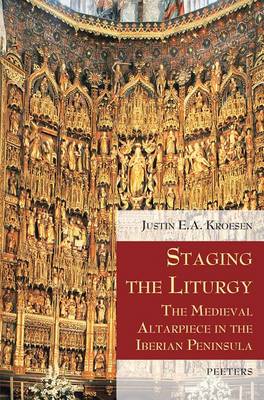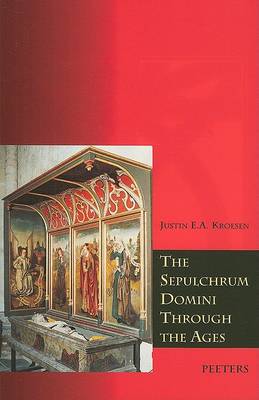Liturgia Condenda
2 total works
v.22
Spain and Portugal possess a wealth of medieval churches, including many with original furnishings. Most outstanding of all is the altarpiece or 'retablo', the epitome of Iberian ecclesiastical art. With its exceptional dimensions, architectural structure and extensive imagery, it became clearly distinct from altarpieces elsewhere in Europe. The retable cannot be understood simply as an artistic genre, but must be viewed in its spatial surroundings and against its religious and socio-cultural background. In the present study, the medieval altarpiece in the Iberian Peninsula is approached as a witness to liturgy, faith and devotion. Part I sketches its morphological development from its origins around 1100 to the end of the Gothic age in the first half of the sixteenth century. Part II analyses the retable in its spatial context, formed by the architecture of the church building and other elements of the interior such as the choir. In Part III the retable is discussed as a means of communication, conveying a message between the patron who commissioned it and the recipients.
Both as an art object and as a bearer of imagery, the altar retable played an important part in the staging of liturgy in the medieval church of the Iberian Peninsula.
Both as an art object and as a bearer of imagery, the altar retable played an important part in the staging of liturgy in the medieval church of the Iberian Peninsula.
v.10
Throughout the centuries, commemoration of the events happened at Golgotha has been given form and expression in Western European Christian tradition in two different ways: through the visual arts (architecture and sculpture), and within the liturgy. This book gives a diachronic outline of the development of the Holy Sepulchre as a central theme within the tradition of Western European Christianity. Its aim is to cover both representation and function. Two lines are followed in the study, corresponding to these two aspects. The first analyses the historical development of the Holy Sepulchre in its many manifestations from late Antiquity up to the present day, with particular attention to the cultural and historic context. This section is well illustrated with over a hundred photographs (partly in colour) and many ground-plans. The second section consists of an analysis of the use of the Holy Sepulchre throughout the centuries, including a description of the liturgical function of the Easter sepulchre during the Holy Week and Easter, and its role in worship. The final chapter presents the main areas in which various aspects of manifestations and function complement each other.

